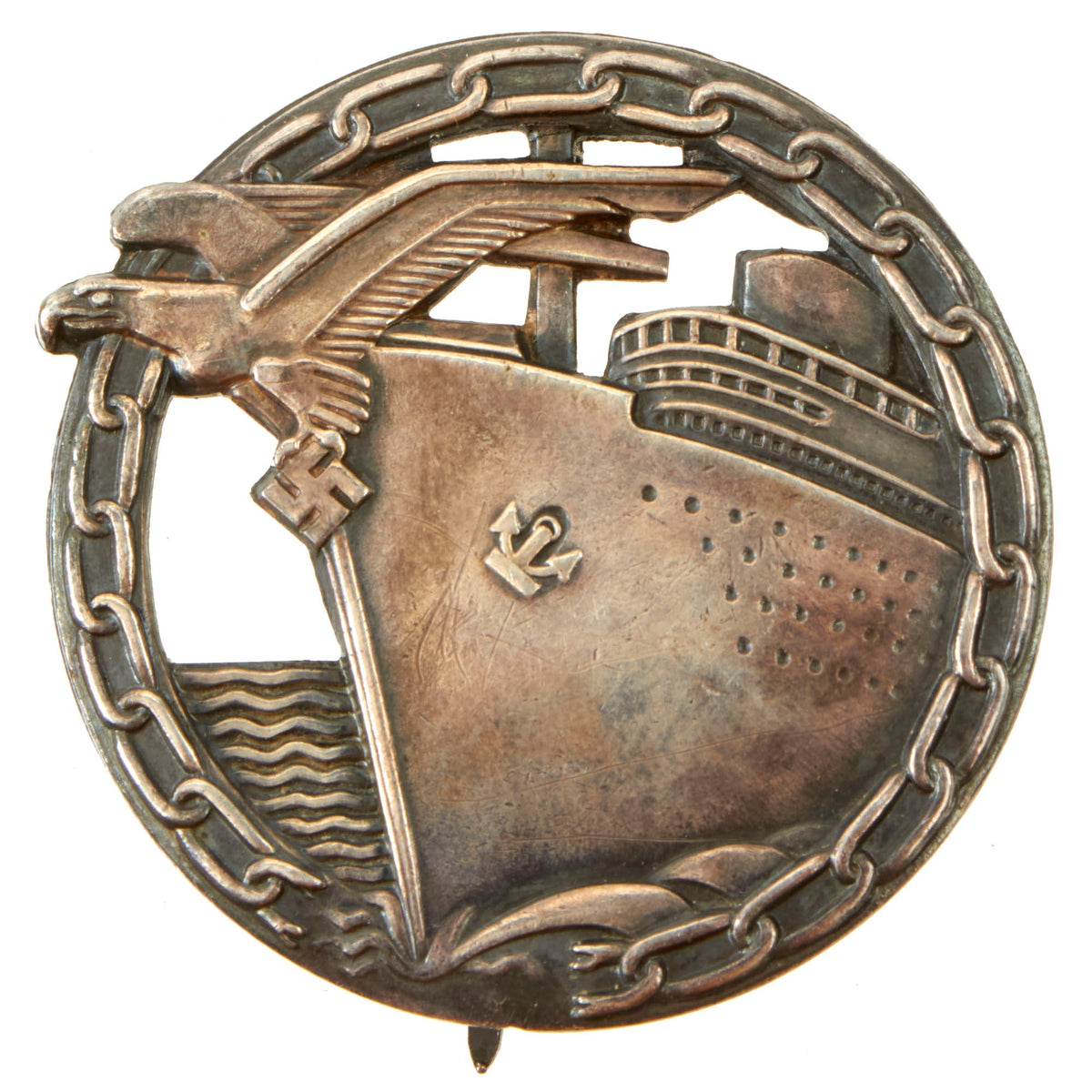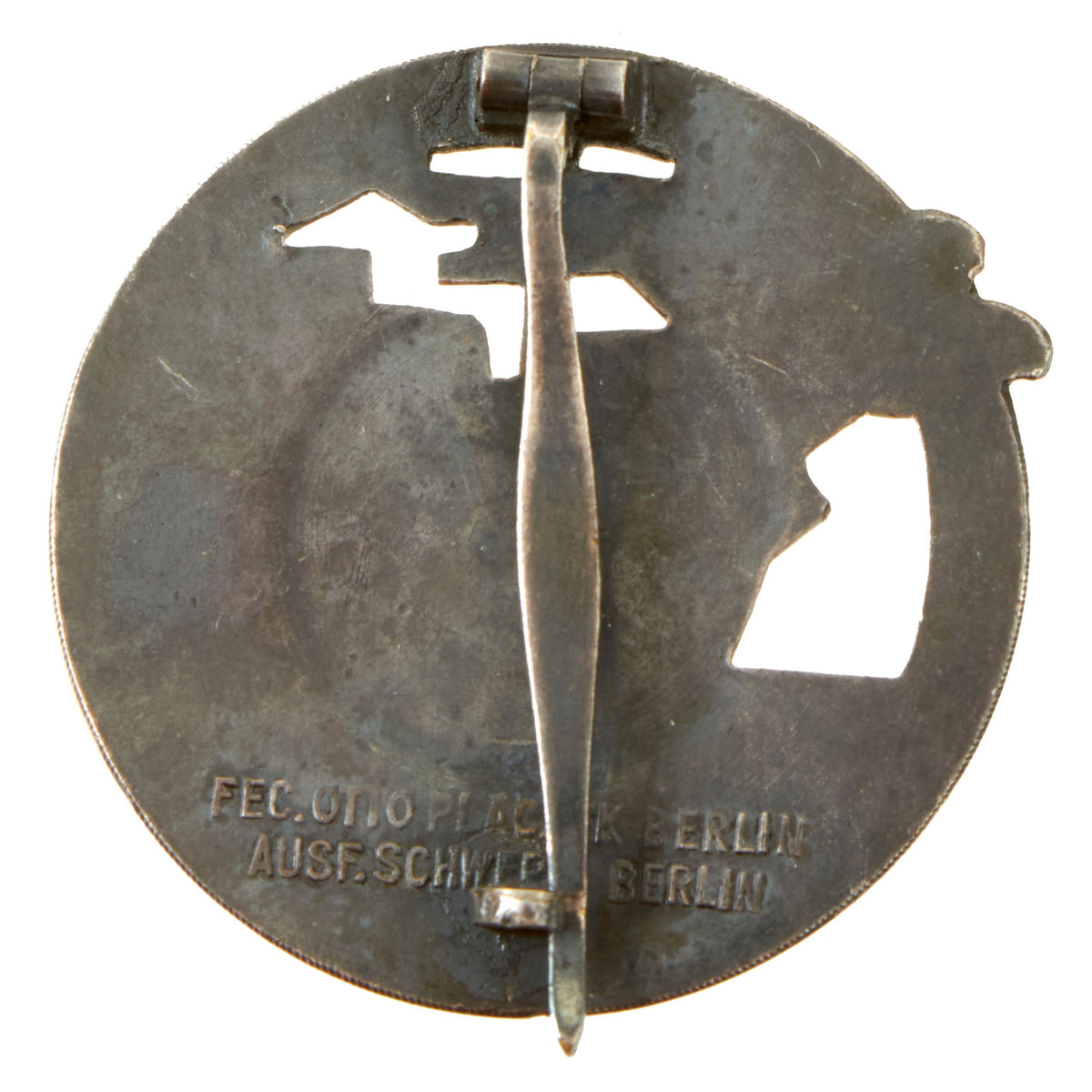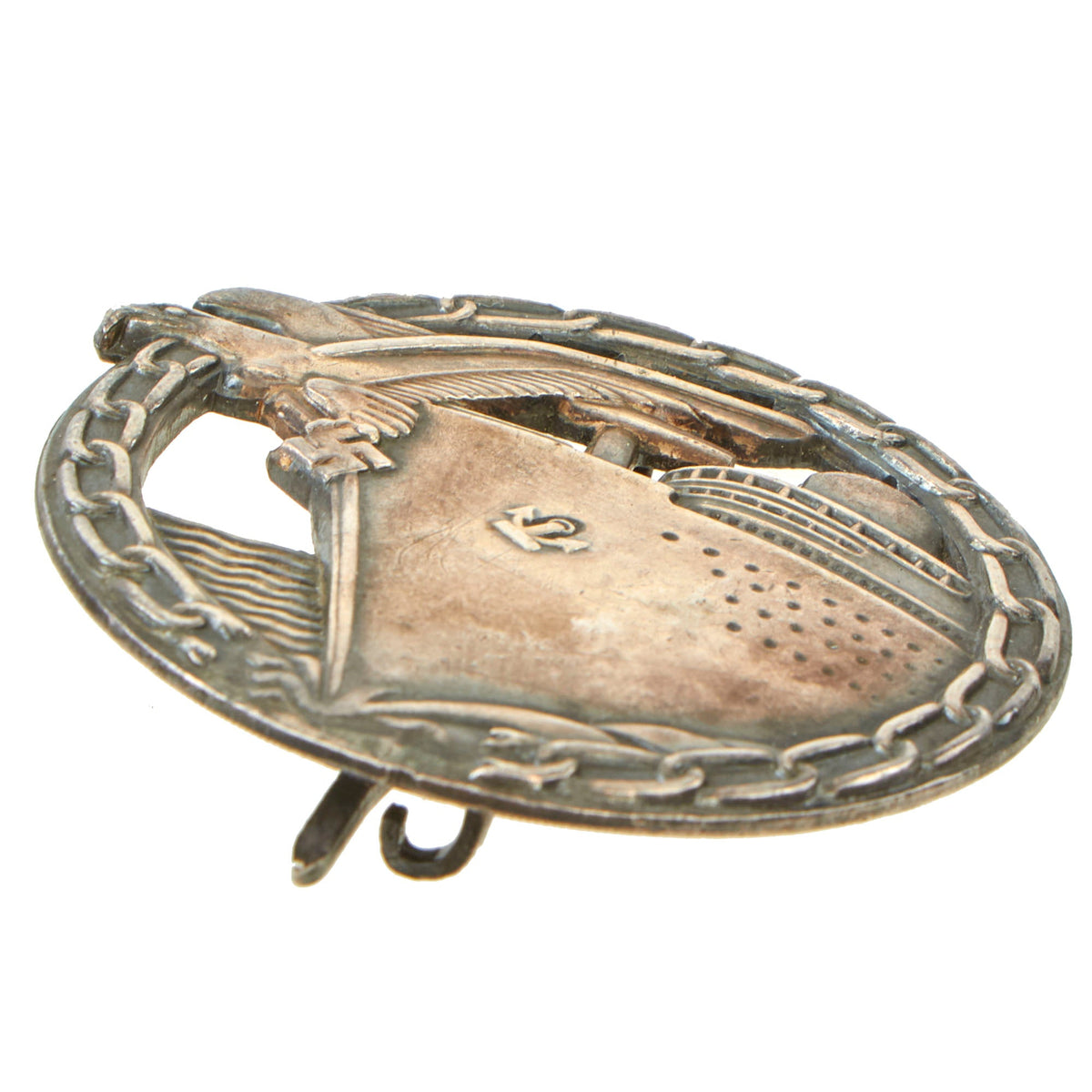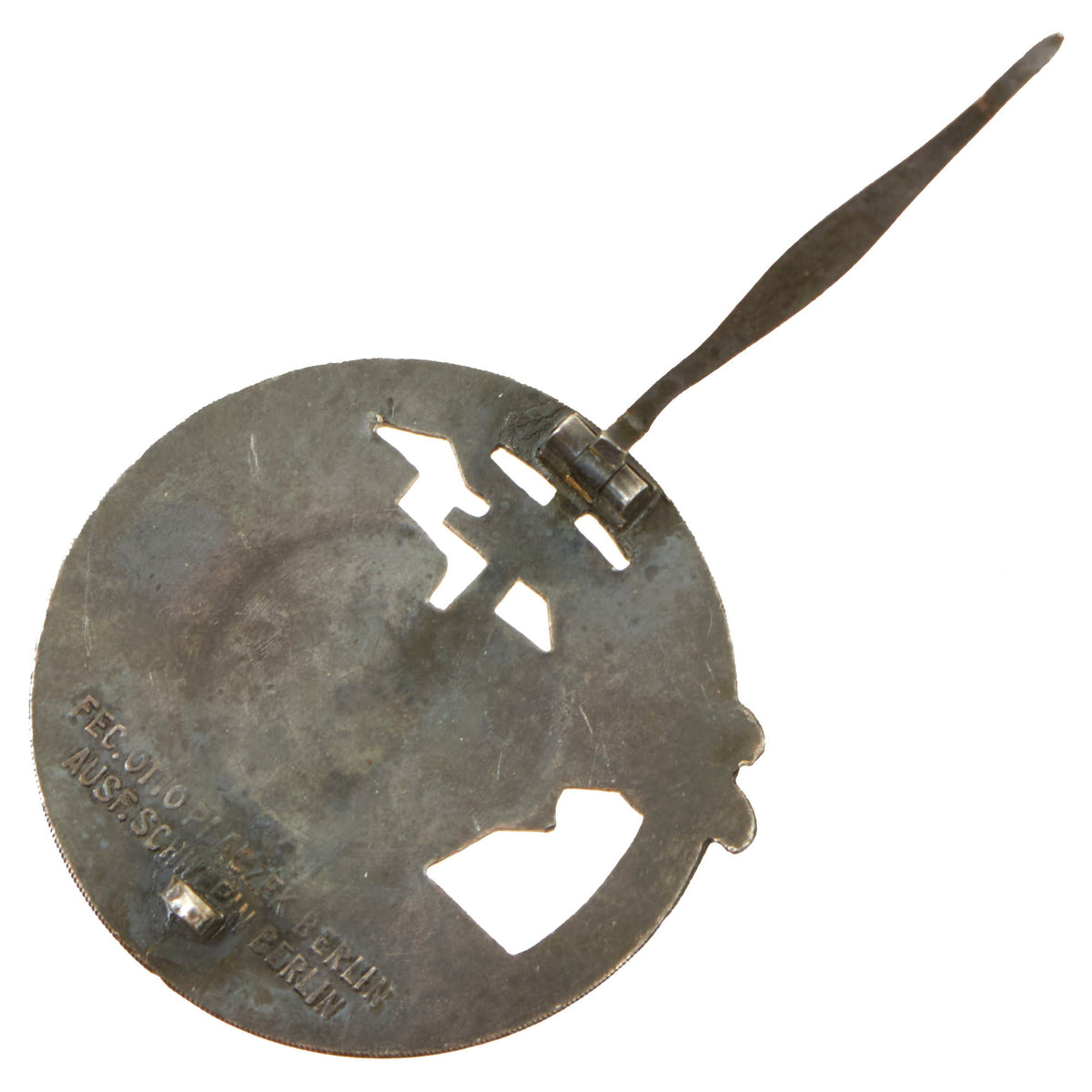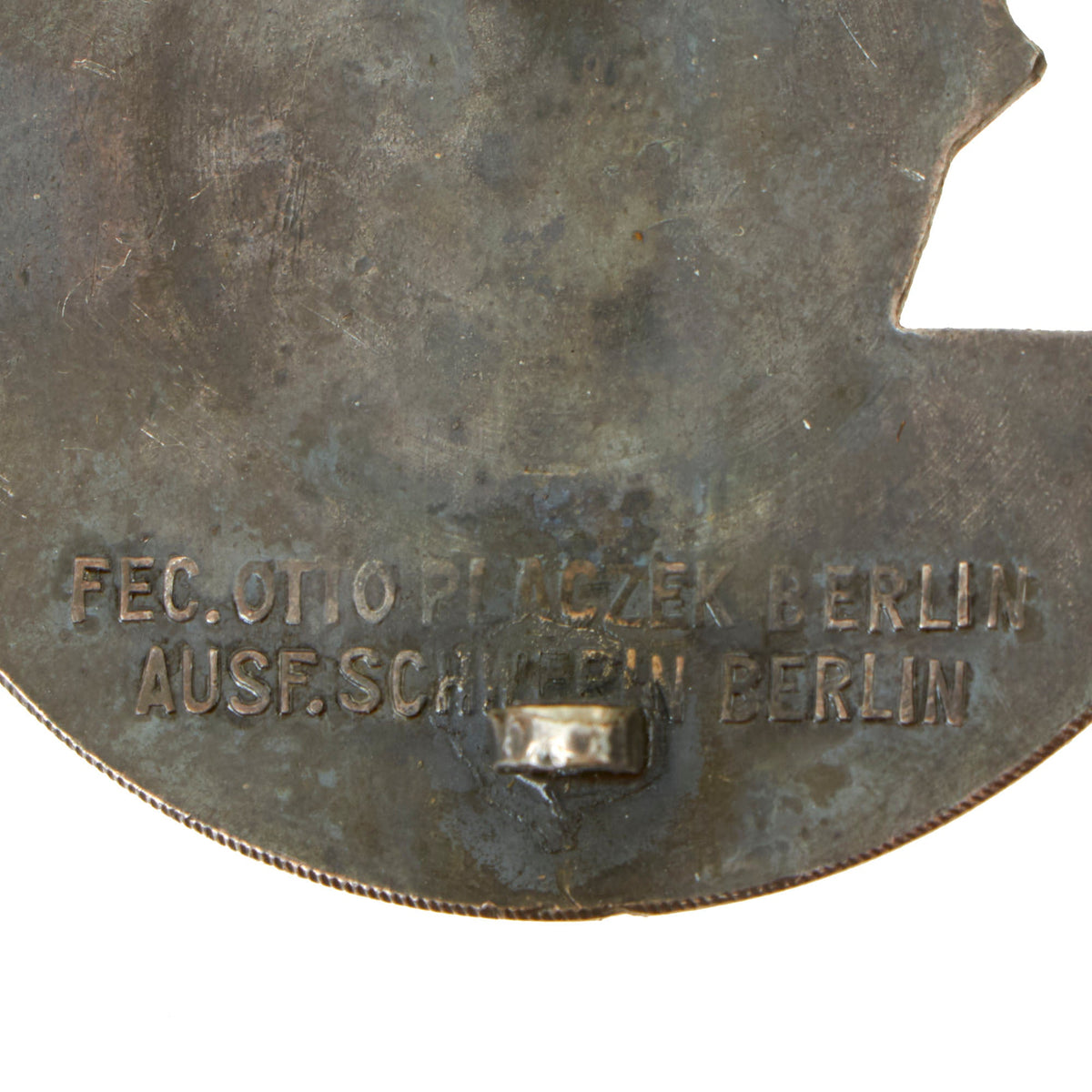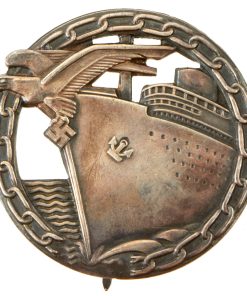Original German WWII Early Military Blockade Runner Badge by C. Schwerin & Sohn of Berlin Original Items
$ 495,00 $ 148,50
Original Items: Only One Available. This is a textbook example of a fine quality Blockade Runner badge (Blockadebrecherabzeichen) in circular silver plated tombac alloy. The obverse shows a large ship breaking through waves with a large Reichsadler eagle clutching a swas (hook cross) on its stern, surrounded by a border of silvered chains being broken by the ship near the bottom. The reverse is plain, with a barrel hinge attached pin, retained by a bent round wire catch.
Like most early war badges, this example is fully maker marked on the back with:
FEC. OTTO PLACZEK BERLIN
AUSF. SCHWERIN-BERLIN
“Ausf.” is short for Ausführung, meaning “execution” or “made by”, so this is example was made by C. Schwerin & Sohn of Berlin, a known maker of this badge. Otto Placzek is the designer of the badge. It measures approximately 1.92 inches (48.8 mm) across.
The badge is offered in very good condition, with little sign of wear, and the silver plating almost fully retained, with no areas where the base metal is visible. Originally these would be mostly “blacked” with the eagle left bright silver, however the front side has been cleaned, removing this finish from the ship, which now shows a bit of light tarnish.
A very good example from a desirable maker.
The Blockade Runner Badge or the Badge for Blockade Runners (German: Abzeichen für Blockadebrecher) was a World War II German military decoration awarded for service on warships or merchant vessels that attempted to break through the British sea blockade of Germany. It was instituted on 1 April 1941 upon the order of AH and first awarded on 1 July of the same year to Hugo Olendorff.
Design
The badge was designed by Otto Placzeck in Berlin. It was in either tombac or zinc and featured a ship with a large German eagle grasping a swas (hook cross) on its bow. Around the circumference of the badge is a chain, through which the ship is cutting through. The eagle was silvered whilst the rest of the badge was a dark gray color.
The badge was worn on the left breast pocket of the uniform. A smaller half-size version was awarded for use by civilians and members of the merchant marine.
Fast Shipping with Professional Packaging
Thanks to our longstanding association with UPS FedEx DHL, and other major international carriers, we are able to provide a range of shipping options. Our warehouse staff is expertly trained and will wrap your products according to our exact and precise specifications. Prior to shipping, your goods will be thoroughly examined and securely secured. We ship to thousands clients each day across multiple countries. This shows how we're dedicated to be the largest retailer on the internet. Warehouses and distribution centres can be located throughout Europe as well as the USA.
Note: Orders with more than one item will be assigned a processing date depending on the item.
Before shipping before shipping, we'll conduct a thorough inspection of the items you have ordered. Today, the majority of orders will be delivered within 48 hours. The delivery time will be between 3-7 days.
Returns
The stock is dynamic and we cannot completely manage it because multiple stakeholders are involved, including our factory and warehouse. So the actual stock may alter at any time. It's possible that you may not receive your order once the order has been made.
Our policy is valid for a period of 30 days. If you don't receive the product within 30 days, we are not able to issue a refund or an exchange.
You can only return an item if it is unused and in the same state as the day you received it. You must have the item in its original packaging.
Related products
Uncategorized
Uncategorized
Uncategorized
Armored Burgonet Helmet & Polearm from Scottish Castle Leith Hall Circa 1700 Original Items
Uncategorized
Uncategorized
Armoured Fighting Vehicles of the World: AFVs of World War One (Hardcover Book) New Made Items
Uncategorized
Uncategorized
Uncategorized
Uncategorized
Uncategorized
Uncategorized
Uncategorized
Uncategorized
Uncategorized
Band of Brothers ORIGINAL GERMAN WWII Le. F.H. 18 10.5cm ARTILLERY PIECE Original Items
Uncategorized
Uncategorized
Uncategorized
Uncategorized
Uncategorized
